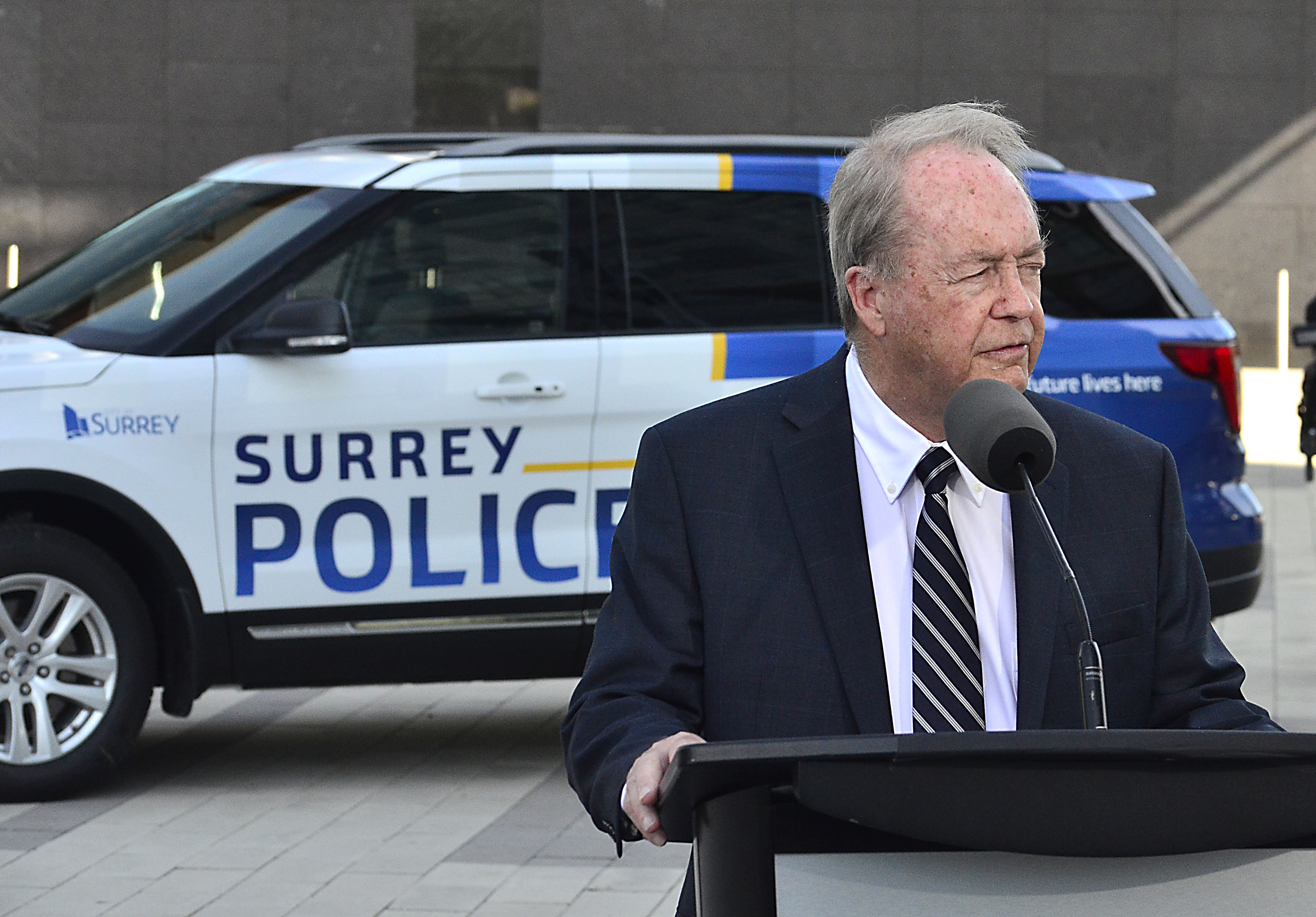The province has released a long-awaited report on Surrey’s plan for it’s own police department.
The report released Tuesday provides a framework for transitioning from the RCMP to a municipal force and offers some warnings to a yet-to-be named police board regarding potential risks.
The transition report is the latest in Surrey’s bid to move from the RCMP to a Surrey Police Department.
Surrey council voted to create its own police department on the first day in office, in 2018.
Since then, several councillors have expressed reservations, due to cost, training concerns and lack of public input.
A provincial police transition committee, chaired by Wally Oppal, examined the potential pitfalls in a transition from the RCMP to a municipal police force.
In the 145-page report, the committee said it looked at six major issues with the transition, including pensions and collective agreements, recruitment, training, information and technology, investigative file continuity and business impacts.
The city’s plan is to have a police strength of 805 officers (the current detachment strength is 843), with an augmented staff of municipal employees.
The one-time cost of transition will be $139 million, with an ongoing increase of 10 per cent, according to the city report.
The provincial transition report is silent on both manpower strengths and costs.
Surrey Policing Transition Plan by KM Dkw on Scribd
The report provides commentary on the “steps necessary to ensure the policing transition is orderly and completed effectively with due regard for the importance of public safety throughout the process.”
The transition report does not give a timeline for the transition, however, the city’s plan is to have it up and running by April, 2021.
Oppal has said that date is ambitious, and that he figures it will take two years.
There are risks with the transition, the committee notes, saying that mitigating those risks will be the job of the yet-to-be named police board.
“In the absence of full information or ability to predict every possible contingency that may arise during the transition, key assumptions must be made,” the report states. “The committee notes that while these assumptions are not without risk, the proposed board and integrated command structure provide mechanisms on which the proposed model is based.”


